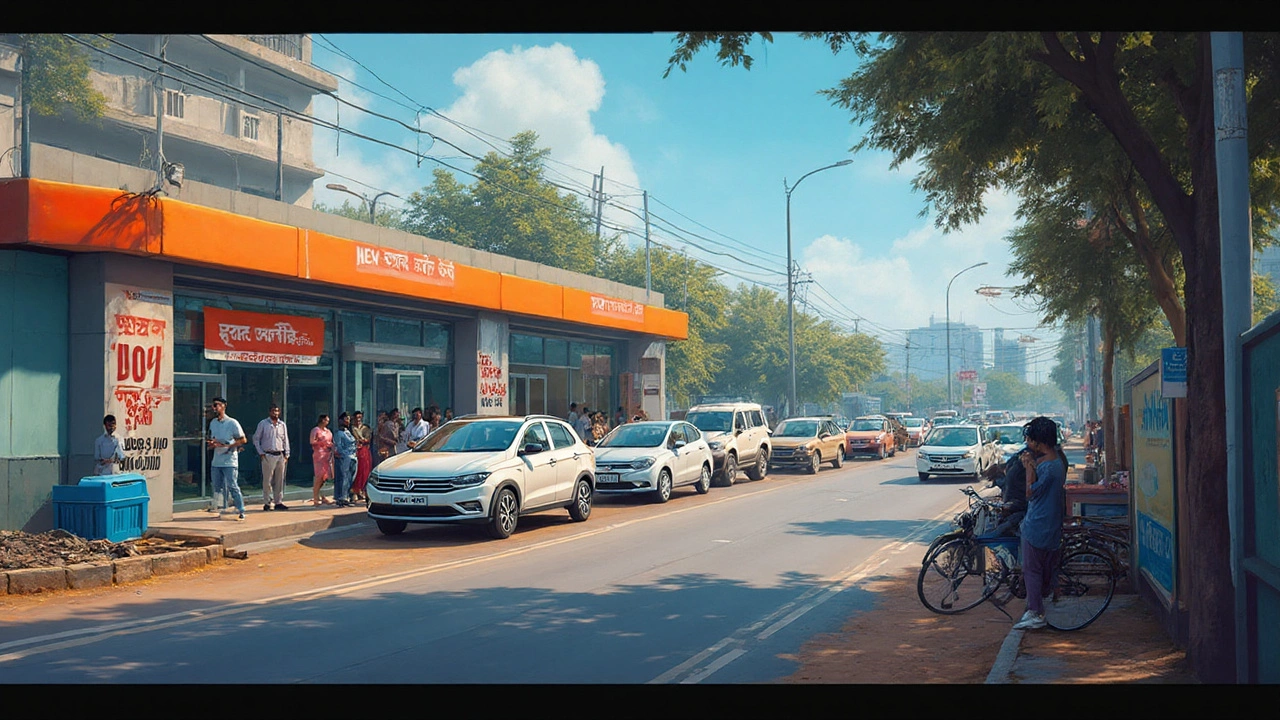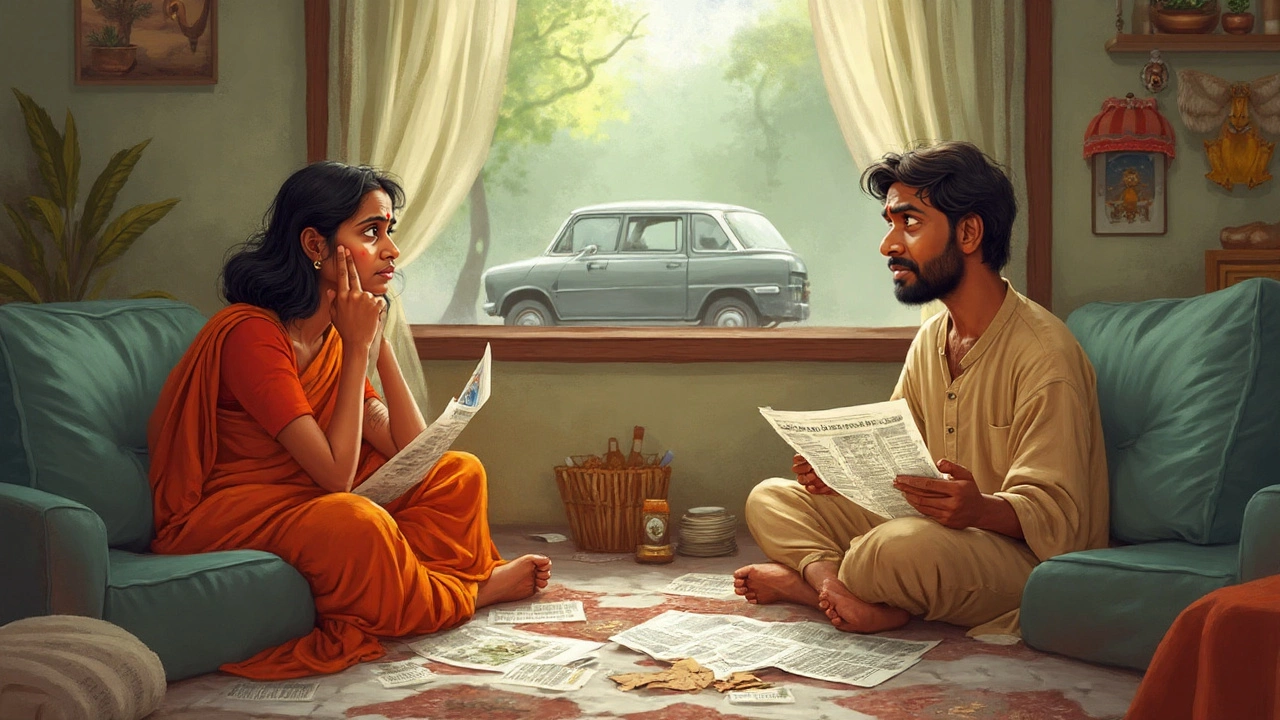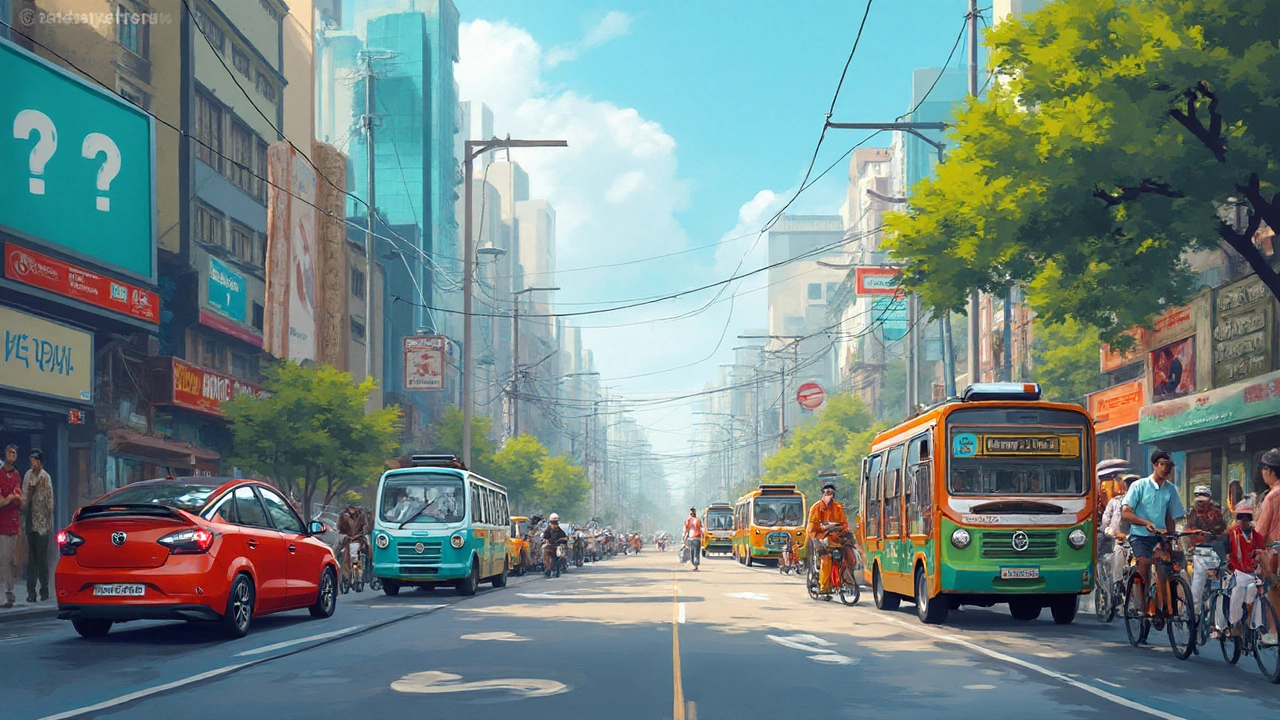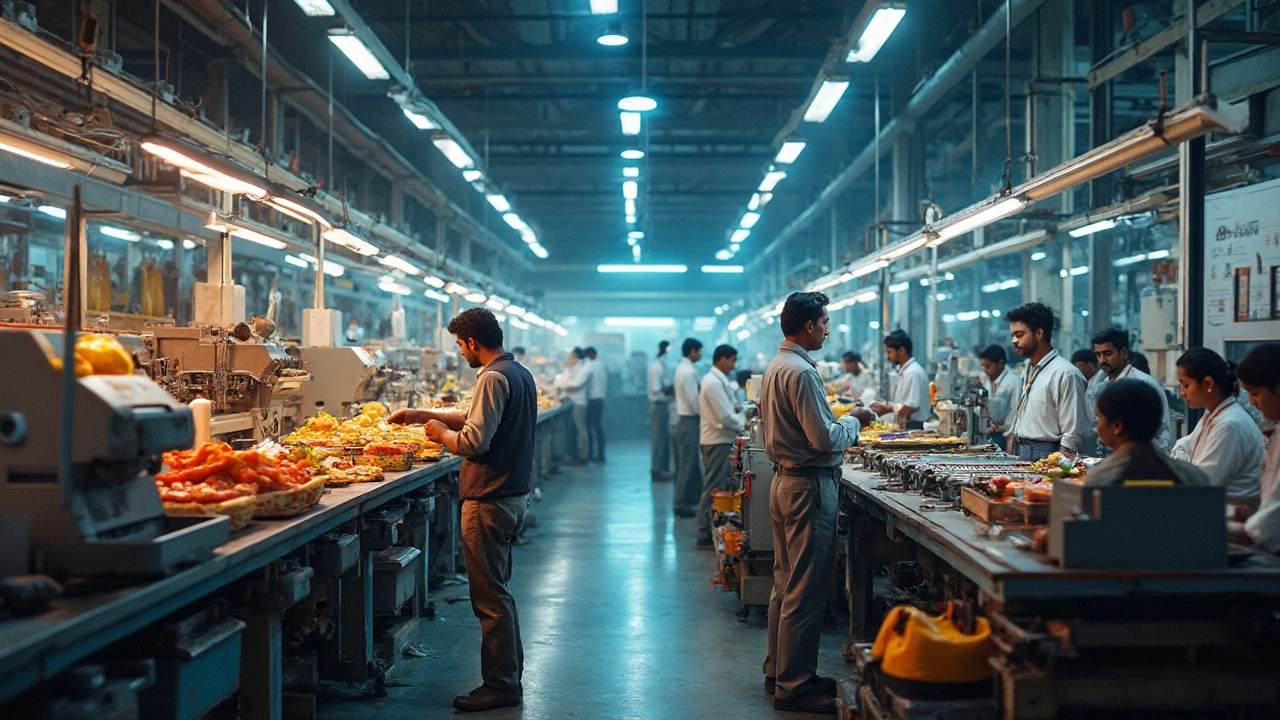Why Aren’t Cars Selling in India? Real Reasons Behind the Slowdown

If someone told you five years back that India, people’s favorite car showroom country, would see new cars gather dust on lots, you’d laugh. But here we are: it’s August 2025, and car companies—from Maruti to Mahindra—are sweating. Big brands are offering never-seen-before discounts, yet the cars aren’t moving. Car sales dropped by 18% last year, as reported by the Federation of Automobile Dealers Associations (FADA). So, what’s driving Indians away from shiny new cars? The answers aren’t just about money. They’re about mood, mobility, city chaos, and how fast things are changing. Let’s unpack what’s really going on behind the scenes of India’s car slowdown—without the sugarcoating.
How India’s Money Woes Ruined Dealer Dreams
Money was tight last year, and wallets are still thin. Inflation tore through family budgets: onions, milk, petrol—all up, and the only thing going down is the savings balance. Even RBI’s own data showed household savings at their lowest in a decade. When vegetables cost a bomb, people press pause on big dreams. Do you buy a ₹12 lakh hatchback, or hold on for a bit longer? More Indians are picking the second option.
Take a look at the Balance Sheet blues. Private sector banks, in a desperate bid to avoid bad loans, have tightened the rules on car loans. Approvals now take longer, with paperwork rivaling a government job application. The days of ‘no income proof, no problem’ car loans are pretty much over. Interest rates for new vehicle loans are hovering around 12%—that’s a lot to pay with inflation sniffing at your heels.
Salaries haven’t kept pace. According to CMIE data, over 63% of urban youth reported no salary hikes in 2024. Small business owners who’d pick up a second-hand Kia or a new Tata Punch have been hit the worst. Rural folks aren’t rushing to city showrooms either—farm incomes slumped after last year’s erratic monsoon. Real people, real pain, and less room to impulse-buy a car.
Now throw in the fear of price hikes. Most people expect car prices to shoot up further as stricter emissions and safety norms roll out. Carmakers keep tweaking model prices—sometimes quarterly—making buyers uneasy. One look at the new car’s on-road price and it’s enough to give anyone a migraine. Car sales aren’t immune from market jitters and people are holding back for better days.
Do Indians Want to Own Cars or Just Get Around?
We aren’t dumb. Gen Z and young Millennials no longer see a car as the ultimate status symbol. They’re thinking: why buy something you use for just a couple of hours a week, then pay for insurance, parking, maintenance, and fuel for the rest of the year? For a whole lot of us, convenience and flexibility are way more important than showing off a ride at a family wedding.
There’s this real vibe for ride-hailing. Ola, Uber, BluSmart, and even the zippy autorickshaw apps have changed city life. It’s not just about commutes: you want to go out, you call a cab. If it’s a party night, you’d rather pay for a ride both ways than worry about police checkpoints and drunken driving checks. There’s also the headache of not finding parking in Indian cities—chucking the car for app-based cab makes sense.
And car subscriptions are picking up steam. Pay per month, get a car, use it like your own, and return it whenever. The subscription economy has invaded the car world, and city dwellers—especially single folks and renters—are loving this no-strings-attached deal. Why own a depreciating asset when you can swap it the minute you move jobs or cities?
Sharing is cool again. Carpooling apps and small companies that rent electric scooters for office-to-metro station commutes mean more people are skipping full-time car ownership. It’s partly about cost, but a big part is just not wanting to deal with the headache that comes with a private vehicle.
| Year | Passenger Vehicle Sales (in lakhs) | Percentage Change |
|---|---|---|
| 2022 | 31.3 | +9.6% |
| 2023 | 30.1 | -3.8% |
| 2024 | 24.7 | -18.0% |
The numbers above don’t lie. Car sales boomed post-pandemic, then got whacked as economic and lifestyle shifts collided head-on. The car just isn’t the aspirational buy it once was.

Red Tape, Policy Puzzles, and Industry Missteps
It isn’t all doom and gloom from the buyer’s side. The industry and the policymakers have tripped too. The new BS7 emission norms coming in 2026 have led manufacturers to rework their entire portfolio. With each step up in emission standards—remember BS4, then BS6?—cars got pricier by anything from ₹25,000 to over ₹1.2 lakh. No surprise: each ‘cleaner and greener’ car strains the budget even more.
Not to mention road taxes and registration costs. Karnataka, Kerala, Maharashtra—some of the highest registration and road tax states now charge up to 18% of a vehicle’s cost. Add mandatory insurance price hikes every year and you’ve got a perfect recipe for sticker shock. States aren’t backing down—instead, they use car taxation to fill government coffers.
Then there’s the electric vehicle (EV) conundrum. The government pushes EVs like tomorrow depends on it. But with patchy charging infrastructure outside Tier 1 cities, a lot of people pause. They want to go green, but they also want a hassle-free trip to their native home without charging drama. Companies dither over EV launches or delay new petrol models, caught in the flux of unclear policy timelines and tax breaks that may vanish with election seasons.
The industry’s own mistakes haven’t helped. Dealers complain of overstocking and being pushed new vehicles by head offices. Maruti, Tata, Hyundai—they all bet big on projected demand, but buyers vanished. Dealerships are now drowning in unsold inventory, forced to fire staff or switch to used car sales for survival. The confusion around BS7, EVs, and sudden government rule changes hurts carmakers too. Even the automakers admit their hands are a bit tied, caught between government pushes and ground-level realities.
Traffic, City Chaos, and Where Do You Even Park?
Indian cities have turned unpredictable. Look at traffic jams: Mumbai, Hyderabad, and Bengaluru now rank in the top 10 globally for average peak commute times, according to TomTom Traffic Index 2025. More people realize driving to work means crawling along at 17 km/h, sometimes slower than a cyclist. Imagine buying a ₹15 lakh SUV and spending an hour every day in stop-and-crawl traffic. Not everyone wants that headache anymore.
Parking has become a nightmare. Even residential colonies in Delhi and Pune now have long waiting lists for parking spots. Basements are clogged, roadside parking is ticketed, and mall parking rates are in the hundreds—sometimes as much as a round of street food for the family. So what do people do? Either risk fines and clampings or leave the car at home for weeks, sometimes months.
Let’s not forget city pollution rules. In Delhi, cars with older registration get banned under the ‘10-year diesel, 15-year petrol’ rule. Kolkata and Lucknow are fighting pollution with similar policies. People now rethink before shelling out big money, knowing their new car might be forcibly retired in a decade, or sooner if they move states where rules are even stricter. For many, just waiting for better public transport or shifting to a scooter seems more logical.
All this city chaos scares first-time buyers, students, and retirees. The days of the car as automatic family property passed on through generations are ending. These days, people simply ask, “Where will I park it? Will it get towed? Is it worth it?” For increasing numbers, the answer is no.

What’s Next? Looking Beyond the Showroom Slump
Car makers and government bigwigs aren’t sitting around. Maruti Suzuki and Hyundai have started talking to young buyers, working on smaller, hybrid models with better mileage and flexible finance. Subscription programs are being ramped up, targeting wary buyers who crave flexibility. The government, sensing the depth of this slowdown, recently reduced GST on small cars and hybrids to 20% from 28%—but only for cars under 1.2L engine capacity.
Across India, the jump in used car interest has been wild. Platforms like Cars24 and Spinny report a 27% increase in used car transactions since March. For people, it’s less upfront cash, less stress if the government changes the rules again, and instant mobility. The used car market is eating into new car sales, fast. And buyers are smarter: five-year-old model, low mileage, single owner? That’s the sweet spot these days.
Urban planners are slowly catching up. More metro lines, EV charging points in newer apartments, and even talk about standardized parking permits in big metros are on the agenda. But let’s be honest—these will take at least a few more years to actually make city driving headache-free.
So is it the end of the road for India’s car dream? Not really. The desire to own personal mobility hasn’t died. People just want smart, fair deals that fit their lives—not solutions from the past decade. Until then, India’s new car blues are likely to haunt showrooms, and the real winners might be those savvy enough to wait or find smarter, cheaper ways to get around. The car market isn’t dead; it’s just learning to read the room.





